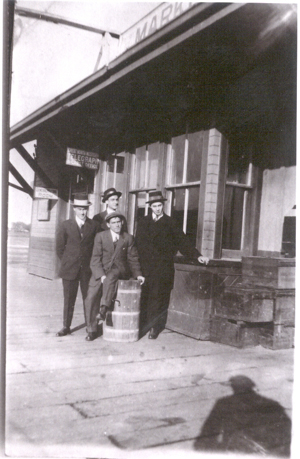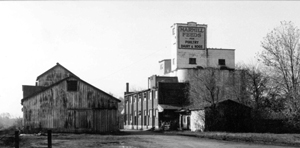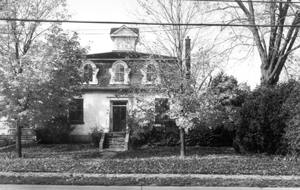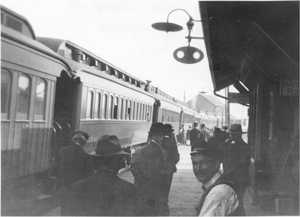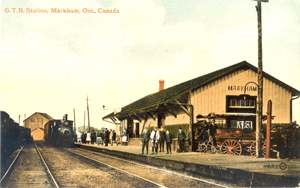 It further made a prediction that:
It further made a prediction that:The Toronto & Nipissing Rail Road (T&N) was initially meant to travel all the way to Lake Nipissing, but lack of government funding terminated the line at Coboconk.
The T&N was built with a 42-inch “narrow” gauge track. At the time, narrow gauge cost less to construct and maintain, and was considered to be safer and faster ,than the broad or “standard” gauge of 56.5 inches.
The distance between the Village and the railway station to its north was at first a source of complaints, but the area quickly developed. The Markham Economist claimed:
There never was a time of more genuine prosperity than we have at present. Every shop is filled with busy hands. The click of the hammer, the buzz of the saw, the puffing of steam, is heard in every direction – everybody is working for everybody.
 It further made a prediction that:
It further made a prediction that:
By the wise management of our Railroad, we believe Markham may ultimately become an important suburban town to Toronto.
Communities bypassed by the rail line, such as Sparta (later renamed Box Grove), started to decline.
This initial enthusiasm was soon dampened by complaints against T&N’s high tariffs. The Speight Wagon Company shipped wagons 15 miles to a northern route rather than pay the tariffs. Sometimes the tariffs were doubled for no stated reason. However, the wagon making and carriage industry was greatly bolstered by the arrival of the railway. Companies such as Speight’s could develop a nationwide clientele. There was also increased demand locally for vehicles to move products or produce to and from the station.
After T&N joined with the Midland Railway Company in 1882, the track was changed to a standard gauge. Now, larger cars and heavier loads could be pulled.
For 50 years, the railway played an essential role in the growth of Markham Village, with two or three passenger trains daily from Monday to Saturday, as well as freight and mail trains. But as the number of automobiles and trucks increased in the 1920s, railway companies began to lose their monopoly on passenger, mail and freight transportation.

